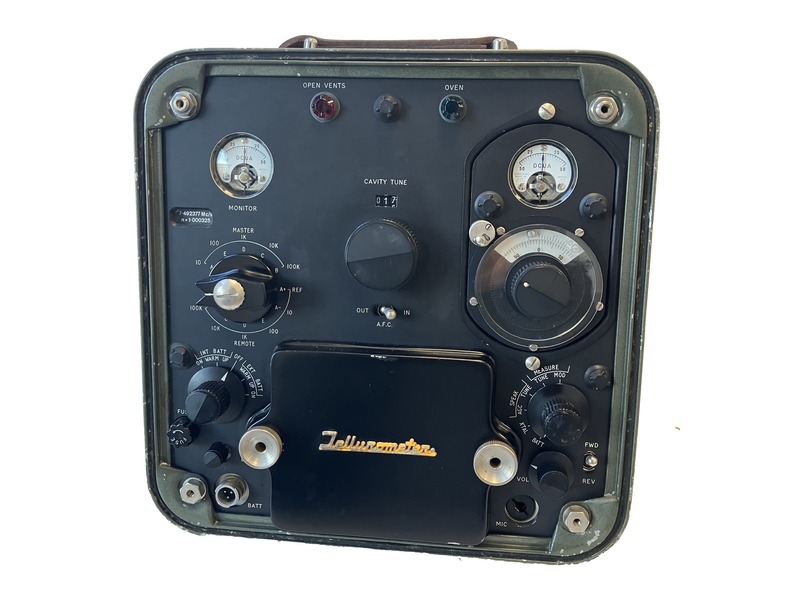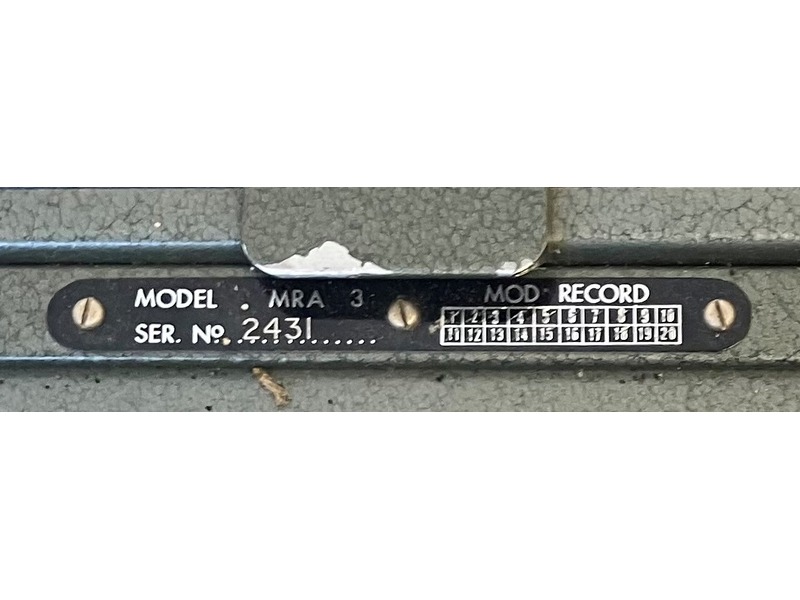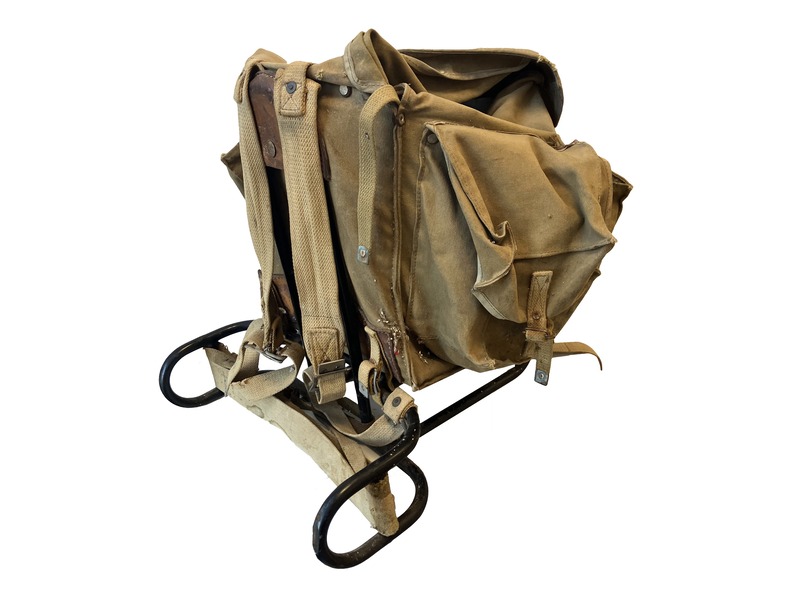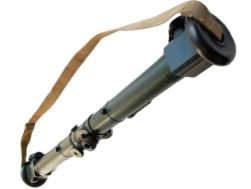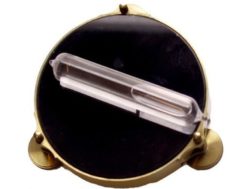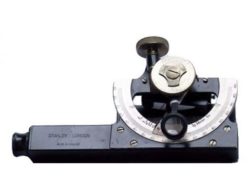Description
One of a pair of Tellurometer MRA3 distance measurers used by the donor in the early 1970’s as part of the British Antarctic Survey (BAS). The device is contained in a self-sealing and rain-proof metal case with a leather carrying handle. The control panel is accessed by removing the case’s back cover. A fitted framed haversack is used to transport the instrument. (See partner tellurometer 2025-005-2).
This tellurometer is an instrument that is used for the accurate measurement of distances in surveying. The MRA3 is mostly transistorised although the microwave source is a Klystron. To carry out a measurement, an instrument is positioned at each end of a line; by means of a switch, either instrument can be set to act as a Master unit and the other as a Remote unit.
Distance is measured by measuring the phase shift of the radio wave over the round trip from master to slave and back to master. Phase shift measurements only determine distance up to multiples of the wavelength. The carrier is a microwave at 10GHz, which has a wavelength of 3cm and clearly this is too short for useful distance measurement. There is a need to use these high microwave bands to get good line of sight distance measurement. Therefore a frequency modulated carrier is used to enable the phase shift to be determined off the modulation and thus made at a longer wavelength. The choice of carrier may be switched to read out the various digits of the distance. For more details see this short EDM presentation.
The instruments are capable of consistently measuring distances in excess of 50 (fifty) km. Under favourable conditions and subject to zero-error calibration, the overall measuring error is ± 1.5 cm ± 3 parts per million of the length being measured. For accurate results, it is necessary to take readings on a number of successive carrier frequencies in order to average out the effects of ground reflections, which cause the indicated readings to differ from the true readings. For long-range measurements, it is necessary to take accurate readings of atmospheric pressure, temperature, and humidity in order to calculate the refractive index of the atmosphere. For short-range measurements (below about 200 metres), calculation of the refractive index of the atmosphere is unnecessary.
The Tellurometer and other devices using microwave signals to measure distances revolutionised surveying by reducing the need for line-of-sight measurements over long distances.
The device is accompanied by:
- Canvas fitted framed haversack
- Tellurometer MRA3 Headset Assembly
- Tellurometer MRA3 Battery Cable
- Tellurometer Service Record
- BAS Log Book for Tellurometer MRA3 Serial No 2356
- Spare fuses (4 No)
The donor, Jonathan Walton, writes:
The donation is also accompanied by:
- Instruction Manual for the Operation and Maintenance of the Tellurometer MRA 3 MK II (December 1967)
- Tellurometer Microwave System of Distance Measurement / MRA3 Dial Read-Out Operating Instructions (TI/T3/H) (x2)
- “‘Micro-Distancer’ Model MRA3” Field Record pad
- “CA1000 Field Record” pad



